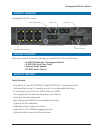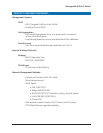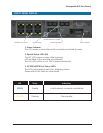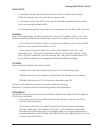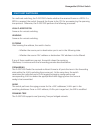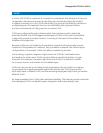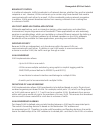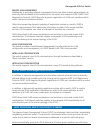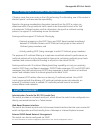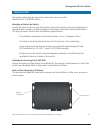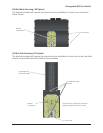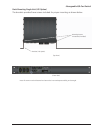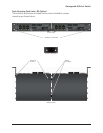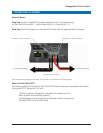
BROADCAST CONTROL
In traditional networks, traffic broadcasts to all network devices, whether they are the intended
recipients or not. However, VLANs can be set up to contain only those devices that need to
communicate with each other. As a result, VLANs considerably reduce network congestion.
In addition, VLANs prevent broadcast storms from causing a network from crashing due
to volumes of traffic.
MULTICAST-BASED MULTIMEDIA APPLICATIONS
Multimedia applications, such as interactive training, video monitoring, and video/data
transmissions, require large amounts of bandwidth. These applications are also extremely
sensitive to variable delays, which are inevitable on a shared Ethernet network. By defining a
VLAN based on the IP multicast address for all defined members on the VLAN, adequate
bandwidth will be available for these applications, providing true multimedia Ethernet.
IMPROVED SECURITY
Because VLANs are independent, only the devices within the same VLAN can
communicate with each other. If a device in one VLAN wants to communicate with
a device in another VLAN, the traffic must go through a router.
VLAN MEMBERSHIP
VLAN implementation allows:
- Up to 64 VLANs in one switch.
- VLANs across multiple switches by using explicit or implicit tagging and the
GARP/GVRP protocol defined in IEEE802.1p and 802.1Q.
- An end station’s network interface card belongs to multiple VLANs.
-A switch port to be associated with multiple VLANs
.
DEFINITIONS OF VLAN MEMBERSHIP
VLAN implementation allows VLAN membership to be defined based on ports. Physical port
numbers organizes port-based VLANs. For example, switch ports 1,2,4 and 6 can be grouped
on VLAN, while server ports 3, 5, 7 and 8 can be on another VLAN. Broadcasts from servers
within each group would only go to the members of its own VLAN. This ensures that broadcast
storms cannot cause a network to crash due to volumes of traffic.
VLAN MEMBERSHIP LEARNING
Port-based VLAN is defined using a static binding between a VLAN and its associated ports.
The switch’s forwarding decision is based on the destination MAC address and
its associated port ID. Therefore, to make valid forwarding and flooding decisions, the switch
learns the relationship of the MAC address to its related port…and thus to the VLAN…at runtime.
Manageable 8/9-Port Switch
User
’s Manual 9



